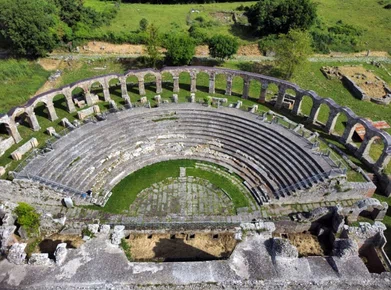
Avec Francesco Benelli (Alma Mater Studiorum – Università di Bologna)
Invité par Antonella Fenech
This paper focusses on a single drawing by Florentine Renaissance architect Giovanni Battista da Sangallo (1496-1548), and annotated by his famous elder brother Antonio the Younger (1484-1546). The subject is the ruin of the roman theater at Ferento, a remote area between Rome and Viterbo. The drawing represents the plan of the ruin, rendered with much precision due to an accurate use of drafting tools.
The analysis of this drawing and the annotations poses a number of questions which the paper seeks to answer: even if the theater at that time was starting to be a popular form of art, why was so important to study such a massive structure impossible to be replicated? Why the Sangallo workshop, the busiest one in Rome and probably in Italy after the death of Bramante, put such a big effort in terms of time and money in measuring the ruin? How could be measured a structure of large dimension and why measuring this one so remotely located? What a survey drawing can convey and what can be extracted from it? Also, the annotations reveal how Antonio’s analysis was driven by the reading of Vitruvius De Architectura, the only available theoretical source on roman architecture in the Renaissance. Antonio’s comments are meaningful to grasp the different - at time contrasting - set of informations that a ruin can provide if compared with those written in the roman architectural treatise, puzzling the critical sense of the Renaissance architect forced to decide which one is right or wrong, a quandary that marks the beginning of the modern architectural critique.
